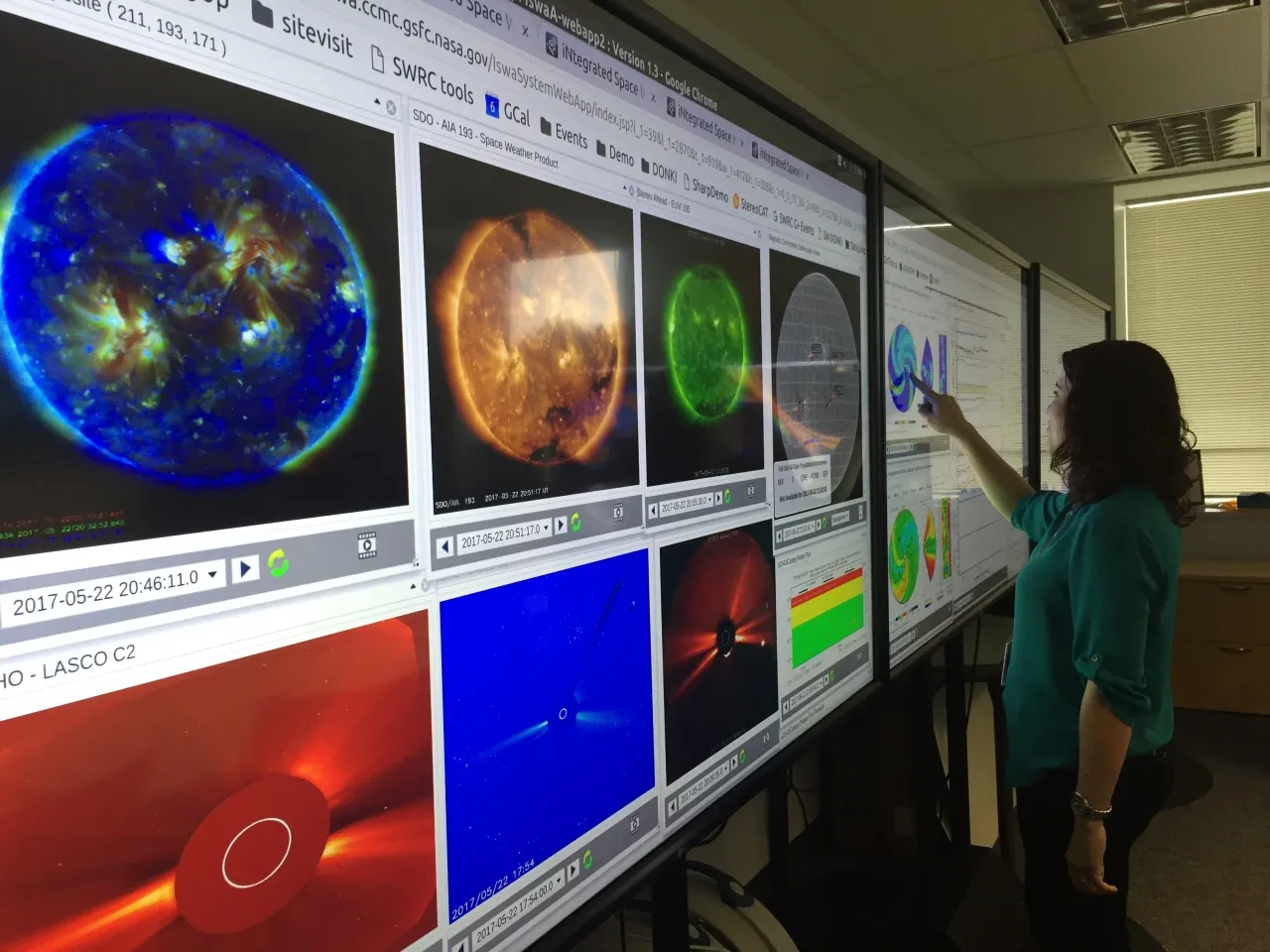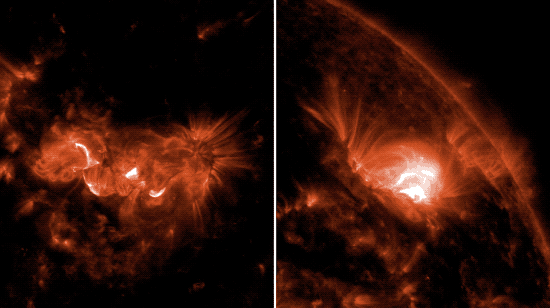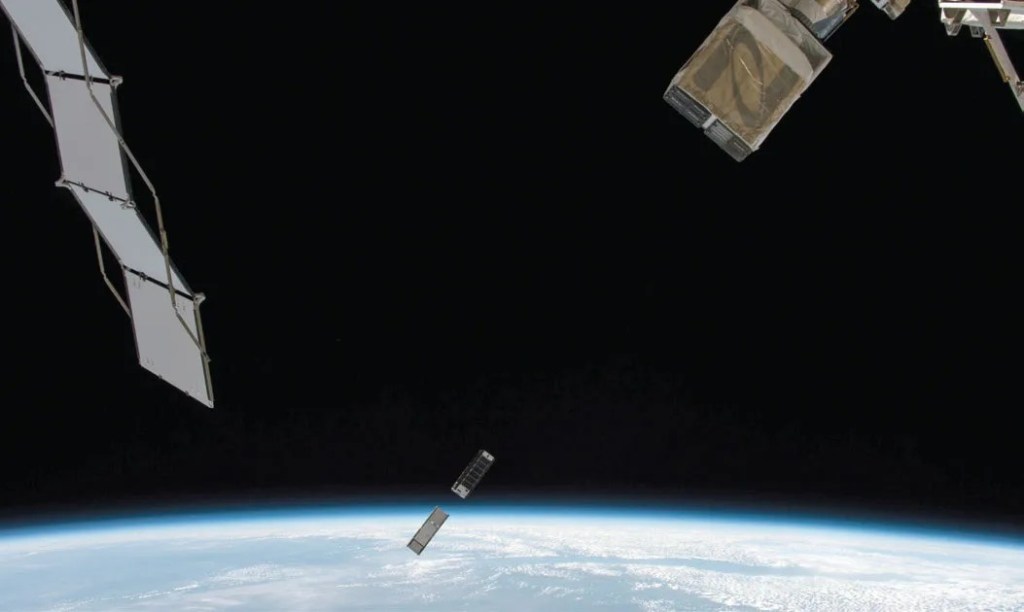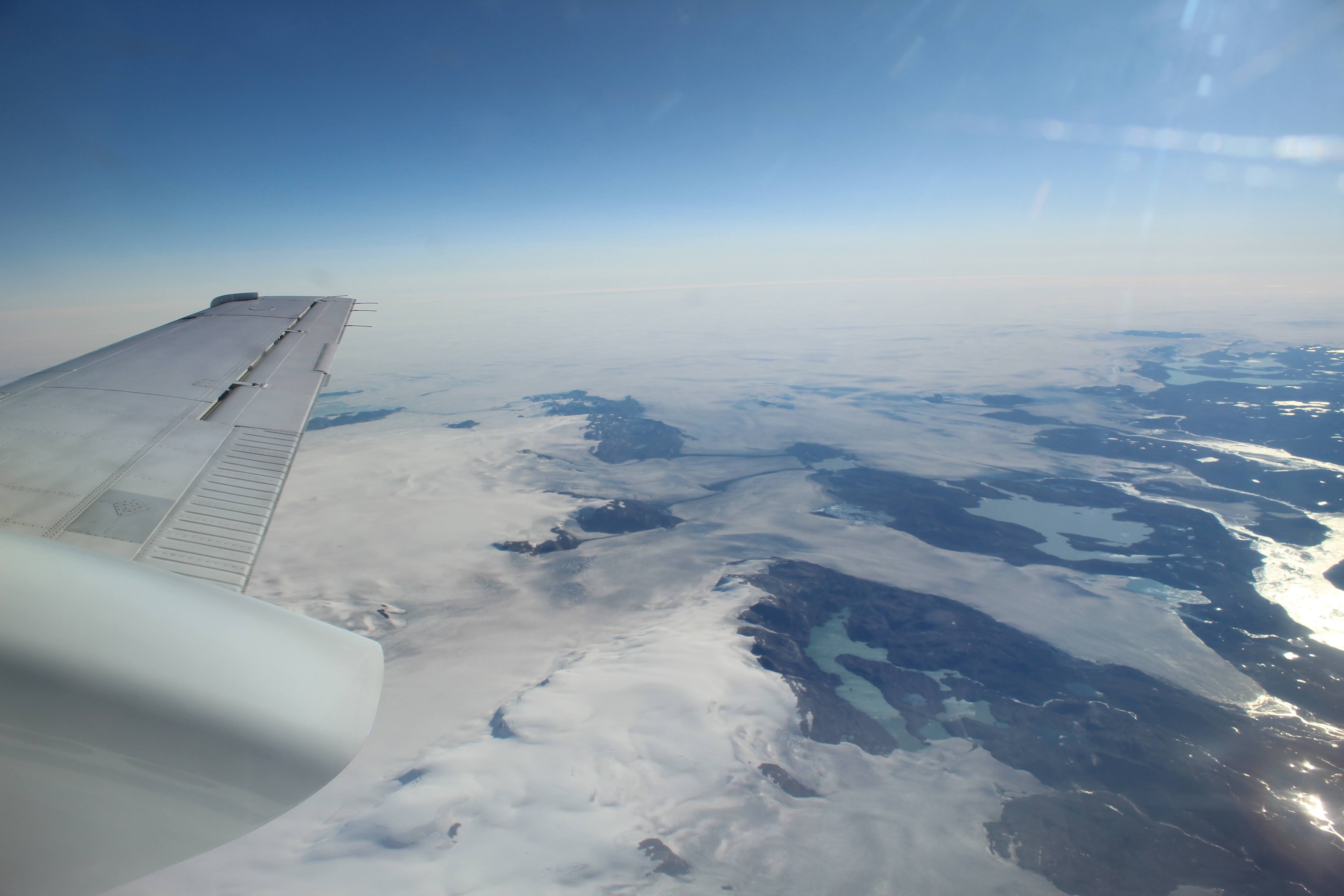The Sun and Your Everyday Life
Though it is almost 100 million miles away from Earth, the Sun influences our daily lives in ways you may not realize.
A farmer stops their planting operations due to poor GPS signal for their autonomous tractor. A power grid manager changes the configuration of their network to ensure a blackout doesn’t occur due to voltage instability. A pilot switches to back-up communication equipment due to loss of high-frequency radio. A commercial internet company providing service to the military must change the orbit of their spacecraft to avoid a collision due to increased atmospheric drag.
These are a few examples of the ways the Sun influences our everyday lives. This is what we define as space weather – the conditions of the space environment driven by the Sun and its impacts on objects in the solar system.
NASA, through the Space Weather Program, studies the physical processes of space weather and its impacts in order to develop the understanding that enables successful prediction and applications.
The Space Weather Program also supports NASA’s robotic and human exploration at Earth, the Moon, Mars, and beyond.

Science Enabling Space Weather Forecasting and Decision Making
A successful forecast or an improved decision is first built on scientific understanding, and this is where NASA supports user-driven space weather research and applications.
NASA implements the Space Weather Research-to-Operations-to-Research (R2O2R) Program Element on behalf of and in collaboration with NOAA, DoD, and NSF to accelerate targeted space weather research toward operational implementation.
R2O2R refers to the cyclical process by which basic and applied research activities (R), having been identified as having the potential for improving forecasting capabilities, are matured in a targeted way toward a formal operational implementation (O) and, once ”operationalized,” subsequent needs for refinements are conveyed back to the research community (R).
NASA's Space Weather Instrument Pipeline is another pathway to host space weather instruments on commercial and other space-based platforms. To date, NASA has selected three instruments for the Pipeline and released two RFIs to gather community input to inform the future of the initiative.

Space Weather Program Missions
International Space Station, Artemis, and Mars
Protecting Astronauts and Assets in Space
Beyond Earth's protection, astronauts are exposed to the harsh environment of space.
Heliophysics Division missions and applied research support activities to keep astronauts and spacecraft situationally aware across the solar system to the potential threats of space weather.
NASA’s Moon to Mars Space Weather Analysis Office (M2M SWAO) conducts real-time space weather assessments to support the development and validation of new capabilities for understanding space weather impacts on NASA robotic and human exploration activities.
M2M SWAO collaborates with the NASA Community Coordinated Modeling Center (CCMC) and NOAA Space Weather Prediction Center (SWPC) to support NASA Space Radiation Analysis Group (SRAG) during NASA human exploration missions like Artemis I in 2022.

Space Weather Interagency Collaborations
Promoting Research and Observations of Space Weather to Improve Forecasting of Tomorrow
Improving the ability of the United States to forecast space weather events and mitigate the effects of space weather
Signed into law on October 21, 2020, by President Trump, the Promoting Research and Observations of Space Weather to Improve Forecasting of Tomorrow (PROSWIFT) Act directs a variety of government agencies, including NOAA, NASA, NSF, DOD, and the Department of the Interior, to coordinate in order to improve space weather forecasts and predictions and mitigate its impact.

The nation’s strategy for space weather preparedness
The National Space Weather Strategy and Action Plan (NSW-SAP) identifies objectives and high-level actions necessary to achieve a space-weather-ready Nation and was released in March 2019. An Implementation Plan for the NSW-SAP was released in December 2023.
Strong coordination and collaboration across Federal agencies, the academic community, the private sector, and international allies and partners will improve America’s ability to understand, forecast, and prepare for space weather events.

NASA's Heliophysics Division established the NASA Space Weather Council (SWC) in 2020
The SWC was established to secure the counsel of community experts across diverse areas of matters relevant to space weather in support the NASA Heliophysics Division. The SWC is a subcommittee to the NASA Advisory Council’s Heliophysics Advisory Committee (HPAC).
The SWC serves as a community-based, interdisciplinary forum for soliciting and coordinating community analysis and input to provide advice on space weather topics to the Heliophysics Division Director through HPAC.

Federal coordination of space weather activities
The Space Weather Operations, Research, and Mitigation (SWORM) Subcommittee is a Federal coordinating body organized under the National Science and Technology Council (NSTC) Committee on Homeland and National Security, organized under the Office of Science and Technology Policy (OSTP). The SWORM coordinates Federal Government department and agency activities to meet the goals and objectives specified in the National Space Weather Strategy and Action Plan (NSW-SAP) released in March 2019.
The Space Weather Advisory Group (SWAG) advises the SWORM based on advice from academia, the commercial space weather sector, and space weather end users.

ROSES 2025 R2O2R Proposers' Teleconference Recording
Recording of the July 31, 2025 R2O2R Proposers' Teleconference hosted by NASA's Heliophysics Division.






































